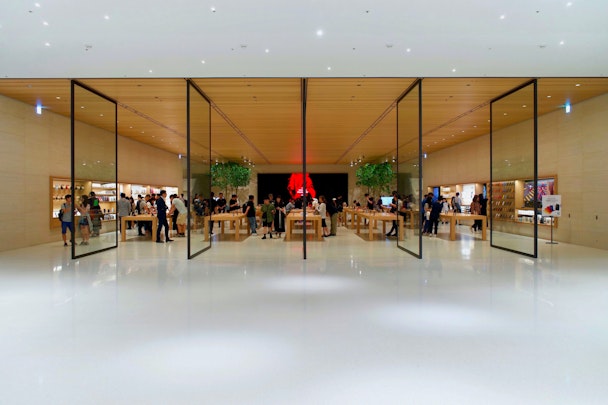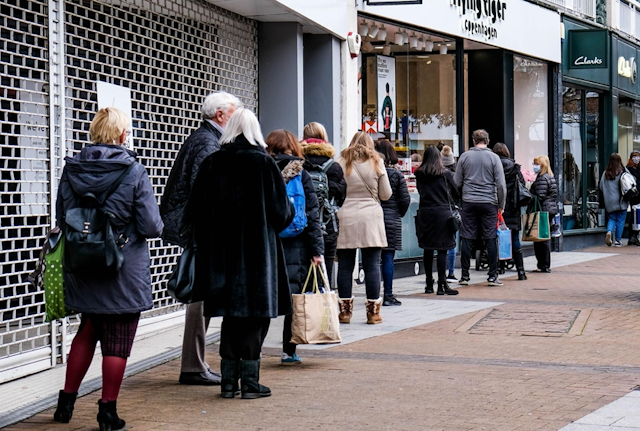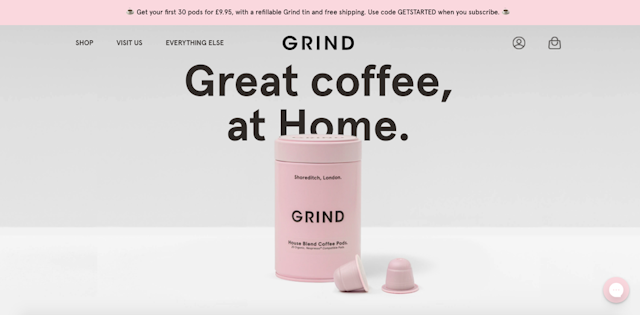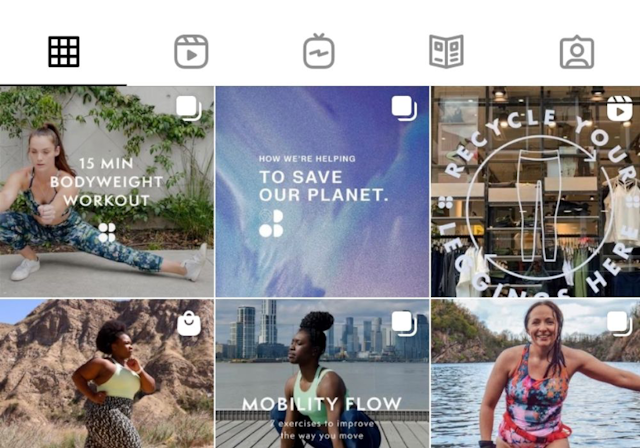What can digital brands teach high-street retailers?
For many of us, the high street is a quintessentially British concept evoking images of nostalgia: browsing department stores in the run-up to Christmas, munching on pick and mix from Woolworths, the back-to-school rush to stock up on supplies for a new term. But in recent years, the rapidly-expanding world of online shopping has faded this classic picture of the high street to become almost unrecognizable.

Mention Me provides five learnings high-street retailers can take from digital brands
Many of the world’s fastest-growing brands are entirely online. Amazon alone clocks up more than 400m visits every month. In contrast, shoppers reject once iconic flagship stores, backed by clunky websites, as relics of the past. Woolworths is now all but a distant memory.
If high-street retailers were steadily jogging along the treadmill of change before the pandemic, Covid-19 cranked it up to an all-out sprint. Andrew Goodacre, chief executive officer at the British Independent Retailers Association, believes we have witnessed “five years’ worth of internet sales growth and five years of high-street decline” in a single year.
Covid has changed more than our shopping habits; it’s completely revamped our lifestyles. More than one million people never intend to return to the office full-time. Instead of popping in-store during lunch breaks, they’re browsing online while working from home.
That’s not to say, however, that it’s all over for the high street. When non-essential shops reopened on April 12, pent-up consumer demand was evident in the snaking queues outside shops such as Selfridges, JD Sports and Primark. E-commerce sales dropped by 6%.

While queues outside reopened shops grew, Mention Me’s Q2 data shows online sales were still booming
Despite the economic hardship Covid-19 caused for many, it’s clear consumer appetite remains. The challenge for multichannel retailers now is to capture – and satisfy – this appetite in a way that keeps customers coming back.
To investigate how they might do this, we’ve looked to the online brands rapidly scooping up market share as legacy retailers plan their next move.
1. Improve your online customer journey
Reeling from the past 18 months, high-street brands are trying to figure out how they can recover quickly and compete with digitally-native businesses. The good news is that they can.
For many marketers, the pandemic eased tight internal restrictions on implementing new technologies and strategies. There’s never been a better time to finally set up that referral marketing platform or customer-led growth strategy.
But acting quickly is crucial to recovery. Get tools that speak to one another to create slick user experiences and automate processes that free up your teams to focus on the tasks robots just can’t do. Hire talented professionals with the knowledge and vigor to lead your digital transformation. Siloed digital teams are a thing of the past; for a successful future, digital must be fully integrated with your business strategy.
2. Provide seamless multichannel experiences
Despite what the endless headlines might have you believe, a physical presence on the high street is often an advantage. If it wasn’t, online retailers like Made.com and Matchesfashion wouldn’t have opened physical spaces, while many others regularly host pop-ups.
As well as building brand awareness and affinity that converts into long-term revenue, physical stores generate profit over the short term. Forrester has found 30% to 40% of consumers using click-and-collect buy additional items once in-store.
While ordering something with a couple of taps on a phone might seem like the ultimate in convenience, this isn’t always the case. There are some products that will always be better tried and bought in person; perfume, for example, and more considered purchases.
The danger comes when retailers rely purely on these physical experiences. Not everyone wants to shop in-store, even now restrictions have been lifted. Offering alternative options is crucial to keeping customers browsing and buying from you, not your competitors. Can your customers try on products virtually, like with Mister Spex? Can they visit a sister store in person, like with Snug Sofa?
Consider how you can unite on- and offline experiences to delight your customers. After piloting it in Spanish cities last year, Zara launched in-store mode. The integrated stock management system lets customers order then collect clothes within 30 minutes; in-store, they can use the app to find products viewed online, then reserve fitting rooms to try them on. In-store customers can even checkout online, meaning the fashion giant can track customer purchases, whether they’re shopping in store or from the comfort of their sofa.

High street retailer Zara has introduced in-store mode for customers
And don’t think the multichannel experience ends once your customer places their order. Physically receiving the order is one of the happiest points in the customer journey. Tap into this by including inserts that surprise and delight, such as incentives to buy again.
3. Get personal
A truly customer-centric business makes every decision based on its customers, continuously engaging with them to understand their changing needs. Ideally, you want to identify what your customers want before they even know it themselves, like the pure play online brands offering at-home meal kits in the early days of the pandemic.
Once you get to know your customers – and we’re talking really getting to know them through focus groups, surveys and ethnographic research – create segments of similar customers.
Rather than trying to please everyone, identify your most important target customers and hone in on them. Identify exactly what it is about your business that should attract these customers, then refine your marketing to effectively target each segment. Make it feel personal, whether that shopper is online or in-store (or both).
4. Keep adapting and experimenting
Much of the success of digital-first brands is their agility – a strength that became particularly prominent when lockdown hit. Almost right away, these brands connected with their customers to find out what they wanted, then doubled down to fulfill those wants. Look at Grind, a London coffee shop that pivoted to offer online coffee subscriptions, complete with compostable, millennial pink packaging.

Coffee shop chain Grind now sells products online
Don’t be afraid to test quick and dirty tactics, such as time-limited incentives or one-off product bundles. Invest with minimal overheads, so you have little to lose if the risk doesn’t pay off.
Keep trying new approaches with your customers. Not every one will be a success; learn from them and try again.
It might feel risky, but in reality the biggest risk of all is doing nothing. Wait too long to implement that new strategy, and your online competitors may well have backed you into a corner beyond recovery.
5. Build a community
Human connection is one of the most powerful influences on our behavior. Tap into this by turning your customers into a community – one rooted in living and proudly sharing your brand purpose with the rest of the world.
Sweaty Betty is a great example of a brand getting this right. As well as selling high-quality products, the British retailer offers workout sessions, wellness tips, motivational stories, nourishing recipes and more, all underpinned by its mission to empower women. It’s an approach that’s obviously working: the British retailer currently counts more than 600,000 followers on Instagram.

Sweaty Betty’s Instagram grid reflects its mission to empower women
Think about how you can bring your community to life on- and offline. Promote your values with unmissable posters in-store; invite customers to real-life meet-ups and group events; and bring your values to life in your actions, such as H&M promoting sustainability through its clothes recycling bins.
Your best marketer isn’t the person sat beavering away at their laptop. It isn’t the person giving the impressive presentation at your company meeting. Your company’s best marketers are – or, rather, should be – your customers.
51% of consumers trust a recommendation from their friend more than any other source. Offer products and services your customers love, and they’ll tell others about it; people who will listen and may well become customers themselves.
The high street isn’t dead; it’s different
In 2021, shops are more than somewhere to try on clothes and complete transactions. They’re experiential spaces where consumers can connect with brands that share their values and beliefs. And they’re centered on the customer. This is retail on customer terms: experiences rooted in functionality, use and value.
Rather than see digital and physical channels as competing, take advantage of having both. Bridge the gap to create seamless customer experiences that stand out. Experiment with how to attract your target customers, constantly testing and learning what gets their attention.
In the words of Justin Pearse, editor of Ecommerce Age, in this video: “Make sure your brand is seamless and frictionless across every channel. Give every customer an amazing experience, no matter where they are.”
The high street isn’t dead; it’s different. By embracing these changes, businesses will thrive.
This article is part of Mention Me’s Life on the Digital High Street series. Read more here.
Olivia Cox, junior copywriter at Mention Me.
Content by The Drum Network member:

Mention Me
Mention Me's referral marketing platform fuels growth for 450+ leading retailers & brands worldwide.
Find out more
